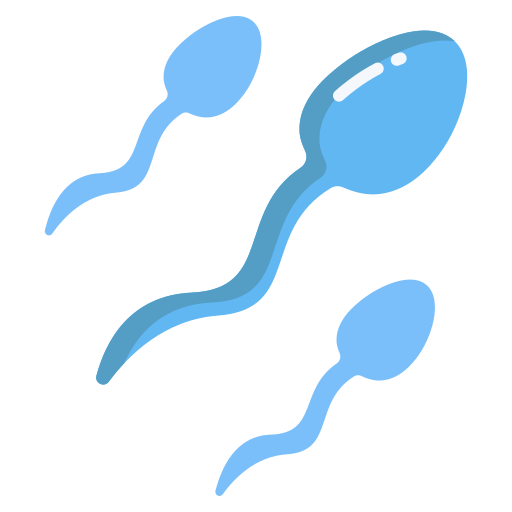PESA Explained: Unlocking Solutions for Non-Obstructive Azoospermia


In the journey towards parenthood, facing infertility issues can be a challenging roadblock for many couples. One such condition that affects male fertility is non-obstructive azoospermia (NOA), a diagnosis where there is an absence of sperm in the ejaculate, not due to a blockage. This article delves into Percutaneous Epididymal Sperm Aspiration (PESA), an innovative and less invasive procedure offering hope and solutions for men with NOA.
Understanding Non-Obstructive Azoospermia
Non-obstructive azoospermia is the absence of sperm in the semen due to failed sperm production, hormonal imbalances, or genetic issues, rather than physical blockages (which characterize obstructive azoospermia). NOA can be a significant obstacle for couples wishing to conceive naturally, as sperm are essential for fertilizing an egg.
What is PESA?
Percutaneous Epididymal Sperm Aspiration, or PESA, is a minimally invasive procedure used to retrieve sperm directly from the epididymis, the tube where sperm mature and are stored. This technique is particularly beneficial for men with NOA, as it bypasses the need for sperm to be present in the ejaculate.
Who is a candidate for PESA?
Men diagnosed with non-obstructive azoospermia, where there is an absence of sperm in the ejaculate due to reasons such as failed sperm production or hormonal issues, are ideal candidates for PESA. It is particularly recommended for those who prefer a less invasive procedure or where other sperm retrieval methods have failed.
The PESA Procedure: How It Works
PESA is typically performed under local anesthesia, making it a preferable option for many due to its quick and less invasive nature. During the procedure, a fine needle is carefully inserted through the skin into the epididymis, and sperm are aspirated directly from the tube. The collected sperm can then be used in assisted reproductive techniques, most commonly Intracytoplasmic Sperm Injection (ICSI), to fertilize an egg during IVF.
Is the PESA procedure painful?
Since PESA is performed under local anesthesia, patients typically experience minimal discomfort during the procedure. There may be some mild pain or swelling afterward, but this usually resolves within a few days.
Advantages of Choosing PESA
The primary benefit of PESA is its simplicity and non-invasiveness compared to more complex surgical sperm retrieval methods. Other advantages include:
- Minimal Recovery Time: Patients typically experience minimal discomfort and can return to regular activities shortly after the procedure.
- Lower Cost: PESA is often less expensive than other sperm retrieval methods due to its simplicity.
- Avoidance of General Anesthesia: Being performed under local anesthesia reduces risks and recovery time.
- Opportunity for Natural Conception: For couples using IVF, PESA combined with ICSI can increase the chances of conception significantly.
Considerations and Success Rates
While PESA offers a viable solution for sperm retrieval, it’s important to consider success rates, which can vary based on individual factors such as the underlying cause of NOA and the quality of the retrieved sperm. Consulting with a fertility specialist who can provide a tailored assessment is crucial.
Post-PESA: The Journey Ahead
After successful sperm retrieval through PESA, the next steps typically involve IVF and ICSI. It is essential for couples to discuss with their fertility specialist to understand the entire process, potential risks, and success rates associated with these assisted reproductive technologies.
Are there any risks associated with PESA?
While PESA is a low-risk procedure, as with any medical intervention, there are potential risks such as infection, bleeding, or damage to the epididymis. These risks are rare, and the procedure is generally considered safe.
Can PESA be repeated if necessary?
Yes, PESA can be repeated if necessary. However, it’s important to discuss the timing and frequency with your fertility specialist, as repeated procedures may increase the risk of complications or scarring.
What is the difference between PESA and TESE?
PESA (Percutaneous Epididymal Sperm Aspiration) involves extracting sperm from the epididymis, while TESE (Testicular Sperm Extraction) involves retrieving sperm directly from the testicular tissue. TESE is usually considered when PESA is unsuccessful or not suitable due to the nature of the male fertility issue.
Hope for Couples Facing NOA
For couples struggling with non-obstructive azoospermia, PESA offers a less invasive and effective option for sperm retrieval, paving the way for successful IVF treatments. By understanding the procedure, its benefits, and considerations, couples can make informed decisions and move closer to realizing their dreams of parenthood.
Embarking on the fertility journey with knowledge and support can transform the experience from one of uncertainty to one of hope. With advancements like PESA, solutions for overcoming male infertility are more accessible than ever, offering couples the chance to unlock the door to parenthood.



